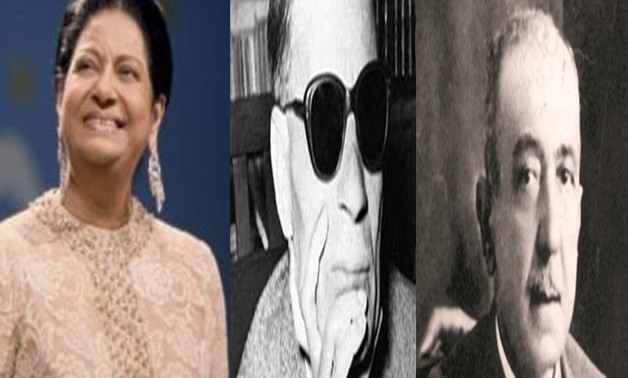
Umm Kulthum, Taha Hussein, Ahmed Shawky, - File Photo
CAIRO – 23 May 2017: In efforts to continue the celebration of museum week, Egypt Today refreshes your memory with top 5 Egyptian museums that commemorate the memory of renowned Egyptian icons that have contributed to the Egyptian culture for decades.
1- Mohamed Mahmoud Khalil museum
Mohamed Mahmoud Khalil museum is a palace located in the Giza area. The palace was owned by Mohamed Mahmoud Khalil pasha who was the Egyptian Prime Minister of Egypt twice in 1928 and 1937.
Khalil throughout his life gathered a large collection of valuable impressionist paintings. Before his death in 1953, Khalil left a will, granting this unique collection to his wife Emiline. Khalil in his will as well asked his wife to dedicate the palace with all its paintings to the Egyptian government after her death, to be used as a museum.
The museum was opened in July 23, 1962. It contains great artists’ works like Van Gogh, Paul Gauguin, Claude Monet, Auguste Renoir and Auguste Rodin.
The arts collection in this museum is deemed to be amongst the largest personal artifact collections in the Middle East.
2- Mahmoud Mokhtar museum
Mahmoud Mokhtar museum is located in Tahrir Street, Cairo. It was opened in 1952, to house the significant sculptures of the most famous sculptor in the Egyptian history Mahmoud Mokhtar.
Mokhtar considered the pioneer of modern Egyptian sculpture. His most famous work is the masterpiece Nahdit Masr (Egypt’s renaissance) statue. The statue is placed in a vital square in the Egyptian capital, opposite to Cairo University bridge.
Mokhtar through Nahdit Masr statue aimed to represent the Egyptian awakening at that era. The statue is for a standing Sphinx beside an Egyptian woman who wants to take her veil off. Mokhtar other well-known sculptures include: Katemat el-Asrar (The secret keeper) and el-Taeya (The hat), French critics said that these two statues represent (extraordinary spiritual phenomenon), as well as Khamaseen and Arouset El Nile (The Nile’s bride) statues.
The museum houses eighty five marvellous pieces made by Mokhtar from bronze, stone, basalt, marble, granite, and plaster.
3- Umm Kulthum museum
Umm Kulthum is the most prominent singer in the Middle East. The internationally acclaimed singer was the first woman to be given the title of the Egypt’s First Lady.
Umm Kulthum valuable belongings including her authentic records and tapes were moved to the museum that holds her name on the site of Manasterli palace in December 2001.
Visiting this museum, you will feel Umm Kulthum's spirit looming in every corner.

Um
4- Taha Hussein Museum (also called Ramatan)
Taha Hussein, dubbed the dean of the Arabic literature, is one of the most poignant figures in the modern Arabic literature.
In 1950 Hussein was appointed minister of education. He was the first and the last blind minister in Egypt. Hussein slogan that he much believed in and worked hard was, "Education is like the air we breathe and the food we drink."
To honour his achievements the Egyptian government converted his residence in the pyramids district after his death into a museum. The museum is made up of two stories. The ground floor contains Hussein’s study and part of his giant 7,000-book library. The reception hall of the museum was where Hussein used to meet in the with intellectuals, politicians and artists every Sunday evening.
The hall contains large piano, gramophone and rare records by Mozart, Schubert, Verdi, Bach,, Schumann and others. The top floor has wardrobe enclosing all the decorations, medals and orders Hussein received during his lifetime.

Taha_hussein
5- Ahmed Shawky museum
Ahmed Shawky is one of the most prominent poets in the contemporary Arab history. He was titled Amir Al-Shuaraa (The prince of poets). The museum was originally his home. It is located on Nile Corniche, Giza. The museum building is guarded by a bronze statue of Shawky.
On the ground floor, there is Mohamed Abdel Wahab suite, including many works of the great Egyptian musician. Abdel Wahab’s talent was discovered by Shawky and cooperated much with him. There is a huge audio library of his work. Upstairs, includes Shawky’s bedroom and study. They haven’t changed since he was there.

ahmed_shawky



Comments
Leave a Comment